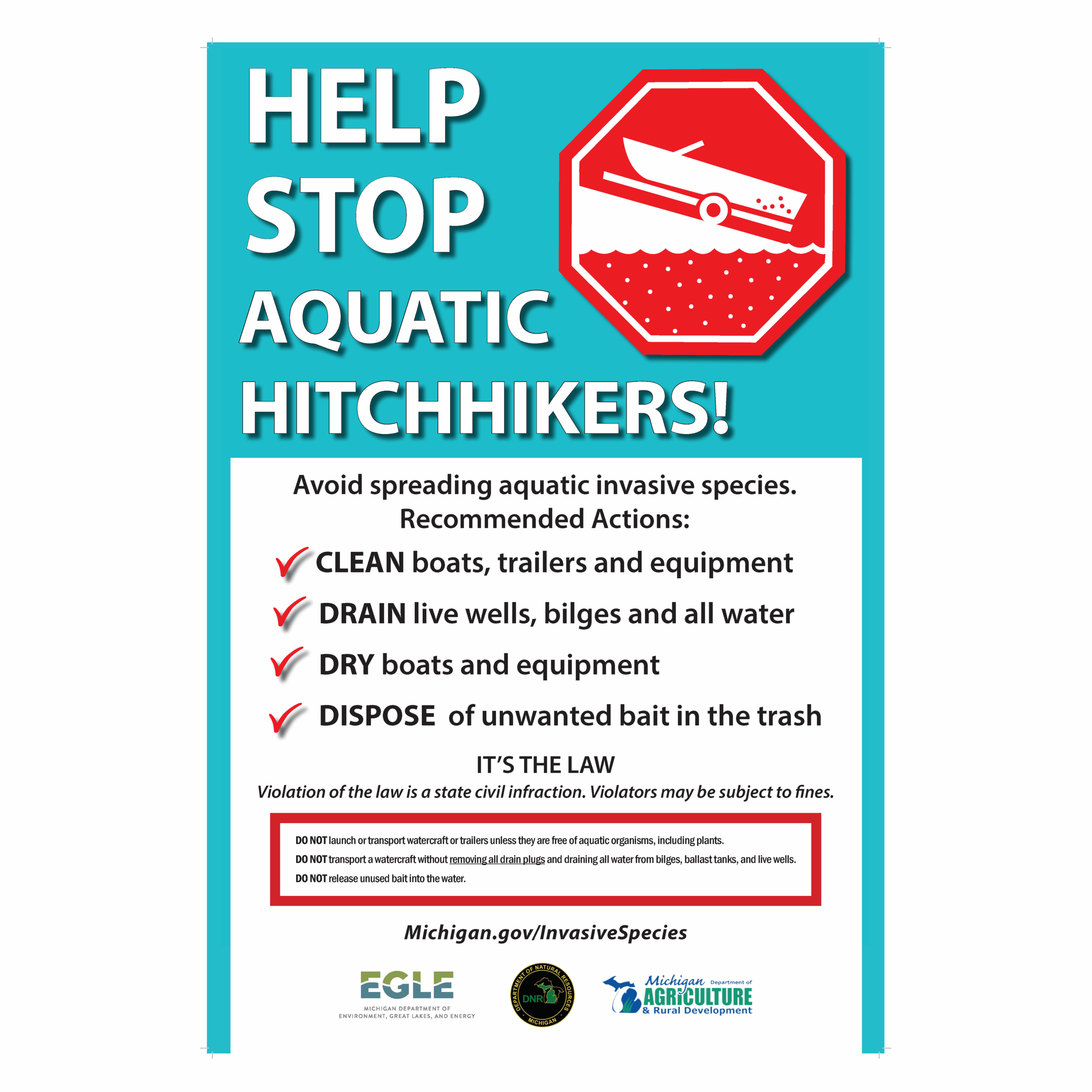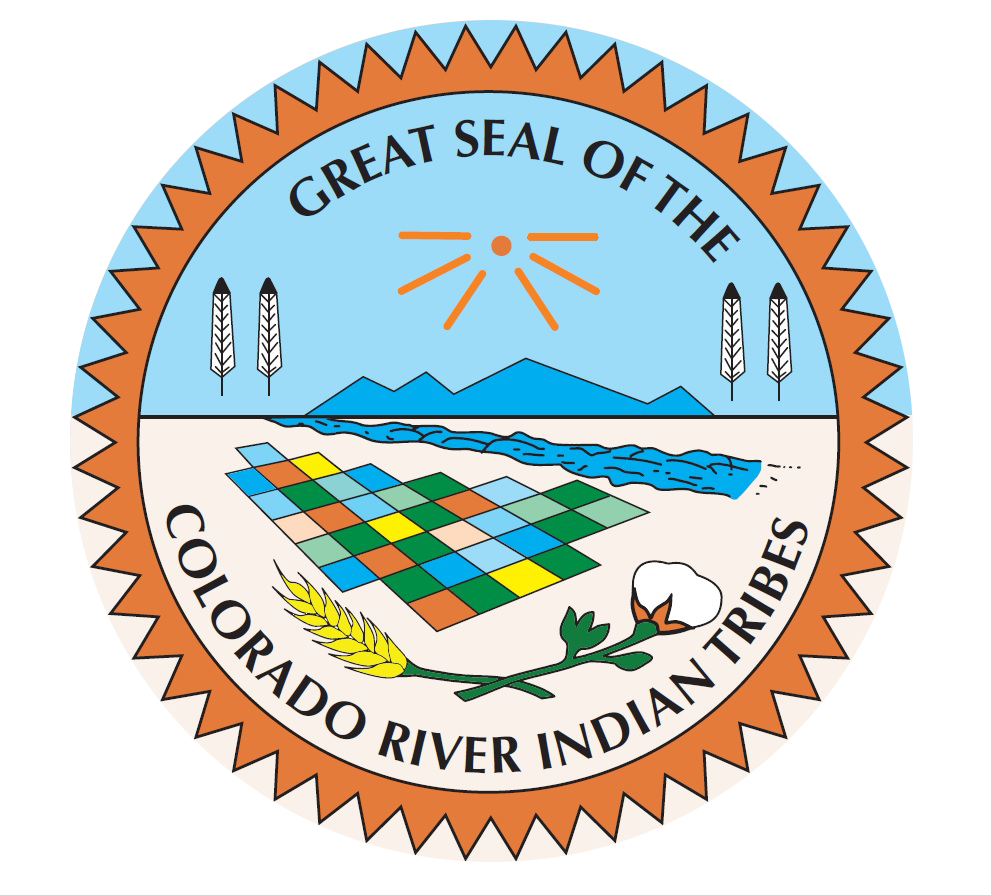NATIVE FISH SPECIES
Humpback Chub
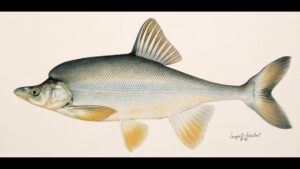
The humpback chub is a native species of the Colorado River that evolved around 3.5 million years ago and is only found in warm-water canyons of the Colorado River basin. The humpback chub was first described from a fish caught in 1933 near Bright Angel Creek, a tributary of the Colorado River in Grand Canyon, making it one of the last large fish species to be described in North America. The species was protected under the Endangered Species Act in 1973 because large dams and human water use changed the river flow. Actions to conserve the humpback chub include managing river flows, providing passage around dams, and removing non-native predators. Monitoring of humpback chub populations indicates that management actions are benefiting the species. In fact, the Little Colorado River population in Grand Canyon is now estimated at more than 11,000 fish, and the Westwater Canyon population in Utah is estimated to exceed 3,300 fish.
Bonytail Chub
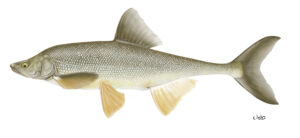
The bonytail is the rarest of the endangered, native fish of the Colorado River and is thought to have evolved around 3 to 5 million years ago. Its name describes the fish as an elegant swimmer and member of the chub group of minnows.
Bonytail were once common in portions of the upper and lower Colorado River basins. In the early 1900s, Chuck Mack of Craig, Colorado, called them broomtails, because “…you could get a firm grip on their bony tail.” Mack, and other old-timers, used to catch these fish in the upper Colorado River basin, along with Colorado pikeminnow and razorback sucker.
Recovery efforts for this species are ongoing, with stocking occurring at multiple locations in both the upper and lower Colorado River basins. Threats to the species include streamflow regulation, habitat modification, competition with and predation by non-native species and hybridization.
Razorback Sucker
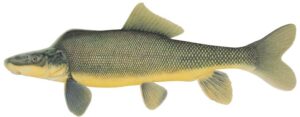
The razorback sucker is endemic to the Colorado River basin and was listed as an endangered species in 1991. Populations are currently in decline throughout the Colorado River basin and have decreased markedly during the last two decades in the lower basin, particularly in Lake Mohave.
Razorback suckers are restricted to a relatively small number of sites in the Colorado River system, from southwestern Wyoming to southeastern California.
Xyrauchen texanus has a more stable population in the lower basin of the Colorado River than the upper basin. Within the lower basin, Lake Mohave, Arizona contains the greatest population of razorback suckers. They are also found in Lake Mead and the Grand Canyon, as well as in some associated canals and impoundments (Gilbert and Williams, 2002). In the upper basin of the Colorado River, the largest surviving population is found in the Green and Yampa rivers.
AIS – AQUATIC INVASIVE SPEICES
Aquatic Invasive Species (AIS) are threatening angling and water recreation and our state’s water and electrical infrastructure. It is critical for anyone who owns or uses watercraft, or has a business reliant on watercraft, to understand the essential nature of this aquatic invasive species containment effort. The spread of quagga mussels and other aquatic invasive species has far-reaching impacts, both financial and ecological, that can touch virtually every resident of the reservation and greater United States. Whether you fish, or boat, or simply get water and electricity to your home, these aquatic invaders WILL affect your lifestyle…and possibly your wallet.
Quagga Mussels
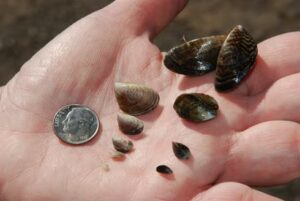
Quagga mussels were first found in Arizona in Lake Mead in January of 2007. They originally came from Eurasia and became established in the Great Lakes in the 1980s. Since being discovered, these prolific invaders have spread rapidly. A single adult quagga mussel can produce up to one million larvae in a single year. They colonize rapidly on hard surfaces and can ruin boat motors and clog water intake structures, such as pipes and screens, thereby impacting pumping capabilities for power and water treatment plants. Invasive mussels such as quaggas and the closely related zebra mussels have cost industries and businesses in the Midwest hundreds of millions of dollars in maintenance and damage repair.
CRIT follows the Arizona guidelines for Boat Decontaminaton! Remember To Do These
- Clean boats, waders, anchors, equipment and gear by removing mud, plants, attached animals such as snails.
- Drain all residual water from engines and motors, ballast tanks, live wells and bait wells. Pull your bilge plug and leave out during transport. Store with boat keys or in a location where you will remember before launch.
- Dry all equipment that comes in contact with water, such as life jackets, ropes, buoys, tubes, etc.
- There are additional steps to complete for watercraft that have been on AIS-listed waters for six or more consecutive days.
See more information on all Arizona decontamination requirements, how to schedule a no-fee decontamination, and the Director’s Orders lists of aquatic invasive species and waters.
For interstate travel, be sure to contact your local state AIS authorities for any additional questions on local regulation compliance.
